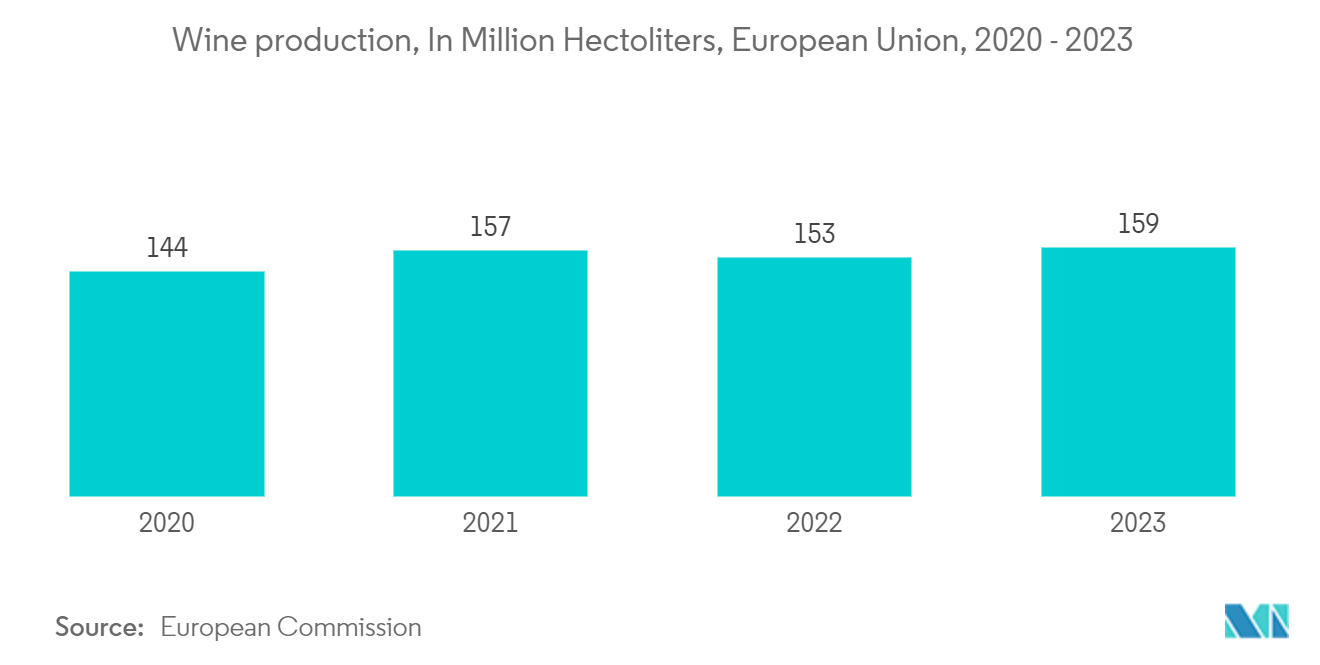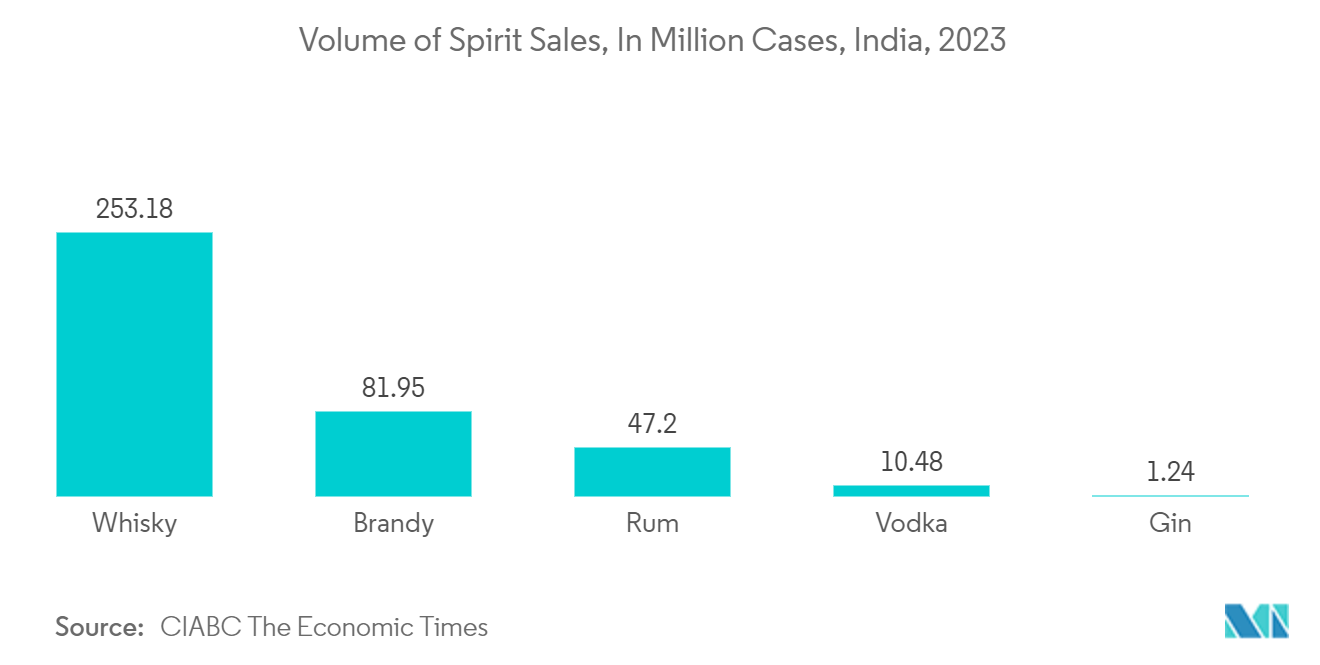Market Trends of Glass Packaging Industry
The Beverage Industry to Hold the Highest Market Share
- Premiumization trends have played a role in selecting glass packaging for various beverage categories, including soft drinks. Soft drinks hold a significant market share, owing to the popularity of such drinks worldwide. Soft drinks offer various flavors and formats to suit every drinking occasion.
- The market for glass packaging in the alcoholic beverage industry faces intense competition from the metal packaging segment in the form of cans. However, it is expected to maintain its share during the forecast period due to its usage of premium products. The growth is expected across different beverage products, like juices, coffee, tea, soups, and non-dairy beverages.
- Among alcoholic beverages, beer has witnessed tremendous growth in the past few years. Most beer volume is sold in glass bottles, driving the need for increased production rates in the glass packaging industry. The increasing demand for premium variants of alcoholic drinks is driving the growth of glass bottles.
- Returnable glass bottles are a cost-effective option for companies to deliver their products. This form of packaging is used mainly in the non-alcoholic beverage industry. About 70% of the bottles used for natural mineral water are plastic. The choice of bottled water packaging material is increasing, considering environmental considerations.
- Beverage companies like Coke and PepsiCo also try to avoid plastic packaging. By 2025, PepsiCo aims to eliminate the use of 67 billion plastic bottles, which glass bottles will replace.
- The global dairy industry has been witnessing a shift from plastic to glass bottles, driven by consumer demand for environmentally friendly milk. Dairy companies like Milk & More and Parker Dairies have noticed a significant rise in demand for glass bottles. Consumers are willing to pay more for this service as they attempt to reduce their use of plastic and help the environment.
- According to the European Commission, wine production in 2020 was 144 million hectares, which increased to 159 million hectares in 2023. The preferred wine packaging is a colored glass bottle to prevent sunlight from spoiling the wine inside. The increasing consumption of wine is expected to spearhead the demand for glass packaging during the forecast period. Wine manufacturers are becoming increasingly innovative in attracting customers with their packaging and are developing new concepts and designs.

Asia-Pacific to Hold the Largest Market Share
- The escalating need for pharmaceutical drugs and advancements in pharmaceutical technology drive the demand for glass bottles, ampules, and other glass packaging solutions. With an upsurge in chronic illnesses and the substantial production of vaccine doses, the demand for primary packaging, particularly glass containers, is expected to surge.
- The increasing consumption of alcoholic beverages drives market growth in the Asia-Pacific region. The beer packaging industry in the Asia-Pacific region is mainly driven by changing cultural trends, growing populations, urbanization, and the growing popularity of beer among the younger populations.
- In India, most spirits, including whiskey, gin, rum, and brandy, are packed in glass bottles. Due to the increasing consumption of spirits, there was an increase in sales in 2023; whiskey had the highest number of cases sold, with 253.18 million cases, followed by 81.95 million cases, and gin at 47.2 million cases, according to Economic Times.
- China is one of the world's largest pharmaceutical markets. Compared to many industrialized countries, healthcare spending is still modest. The Chinese government is improving its ability to research and develop medicines domestically. As a result, it can provide affordable healthcare to more citizens.
- Additionally, alcohol consumption in China has been significantly increasing over the years. As per the Brazil-based bank Banco do Nordeste, the consumption of alcoholic beverages in China is expected to increase the demand for glass packaging in the coming years. Also, many alcoholic beverage companies seek to expand in the country to seize the opportunity.
- Japan has been emphasizing recycling glass containers and bottles to reduce its carbon footprint and has built multiple glass recycling plants nationwide. Over 18 glass recycling plants accept glass bottles and containers to form glass culets and powder. The robust recycling infrastructure promotes glass packaging due to its functional property advantages.
- Also, countries such as India have increased beer consumption. Indian consumers are increasingly opting for glass packaging, particularly bottles, due to health concerns. Glass packaging is preferred over other options as it prevents surface leaching.
- India's pharmaceutical sector places a high value on research and development. In recent years, India achieved global recognition as a medical powerhouse by expanding its R&D ecosystem and boosting pharmaceutical exports, offering growth prospects for various domestic glass packaging providers.
- Increased shipments of glass containers in various end-use sectors are driving market growth in Japan. Glass containers are highly favored for packaging liquid pharmaceuticals, chemicals, and a range of perishable/non-perishable products. The growing preference for eco-friendly packaging solutions positively impacts the adoption of pharmaceutical glass packaging.


